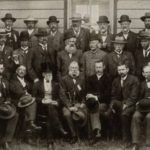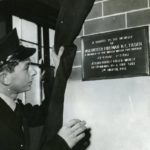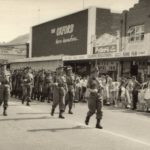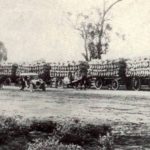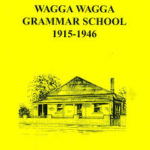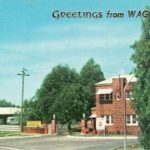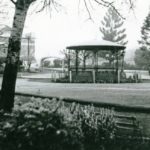Early Pastoralists at the Wagga Show
The first Wagga Wagga Show was held on 21st November 1864, attractions at the show were cattle, sheep and horse exhibitions and prizes were awarded. Throughout the years the Wagga Wagga Show has continued to grow and has become one of the oldest sheep shows in Australia.
Volunteer Fireman Norman Cecil Tilden
A memorial for fireman Norman Cecil Tilden who was killed March 2, 1961 while responding to a fire in Tarcutta Street.
Kapooka – Freedom of the City – 1962
Kapooka Military Area was only the third organisation or person to be awarded the “Freedom of the City”of Wagga Wagga”
James Dunn chaff-cutting plant
Robert James (“James”) worked on his father’s “Bloomfield” estate until he was about twenty years old; then he started in business as a produce merchant in Wagga Wagga. This expanded to include contract chaff cutting and general wholesale produce. James was prominent in the hay and chaff industry for many years. (Sherry Morris).
Wagga Grammar School
In 1914 Eileen and Dora Day purchased a small private day school and relocated it to 105 Best Street as the Wagga Wagga Grammar School. The School closed in 1946.
RAAF Base Wagga Wagga
RAAF Base Wagga has been an integral part of the Wagga Wagga community since 1940.
Vintage Beyer-Garratt 6029 steam locomotive in Wagga 2015
The Beyer-Garratt 6029 entered service in 1954 and in 1959 the was converted to dual control. It was withdrawn in September 1972 and condemned on 4 January 1973. In 1974 the National Museum of Australia acquired the locomotive and placed it in the custody of the Canberra Rail Museum.
Wagga’s First Bandstand
The Town Hall Gardens, situated on the lagoon between Baylis and Tarcutta streets, were chosen as the site for the town’s first bandstand, known as the Victoria Pavilion in 1897.
Great Southern Motors Wagga Ford Dealers 1968
In 1968 Great Southern Motors were located on the corner of Baylis and Morrow Streets in Wagga. Amongst other things they were local Ford motor car dealers.

